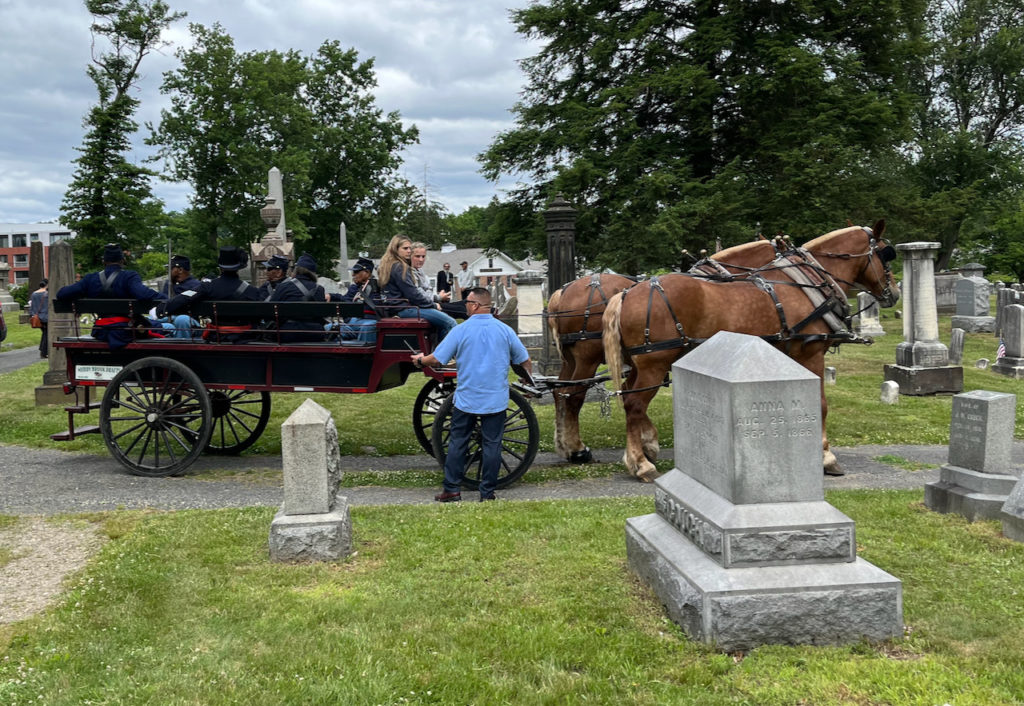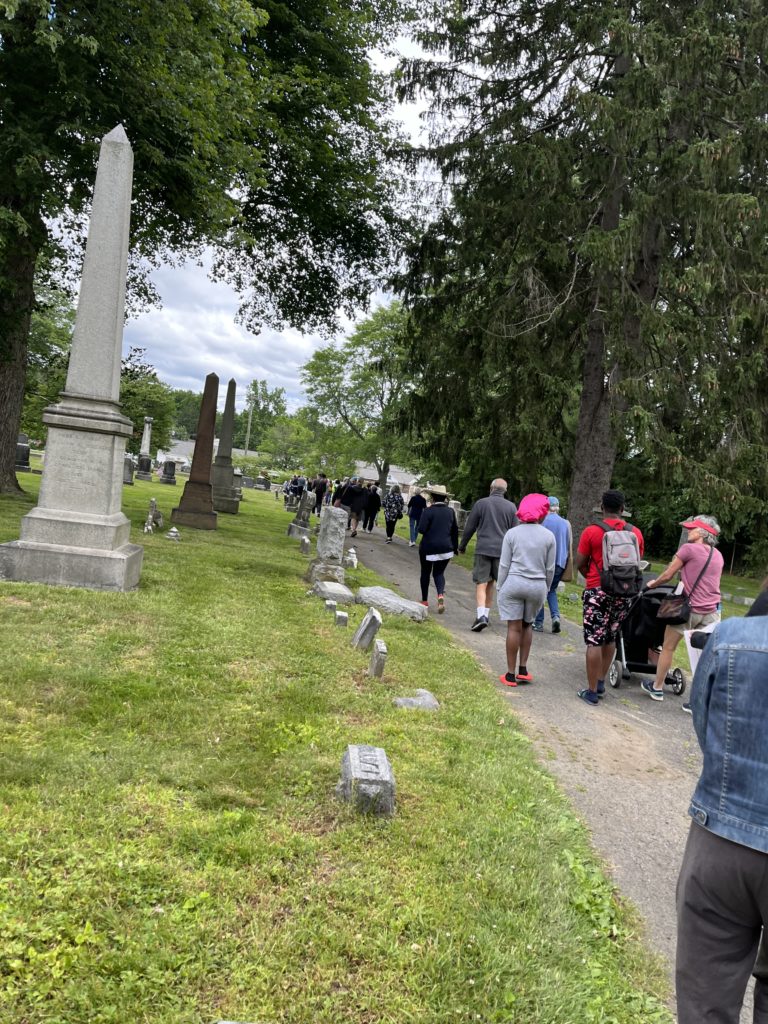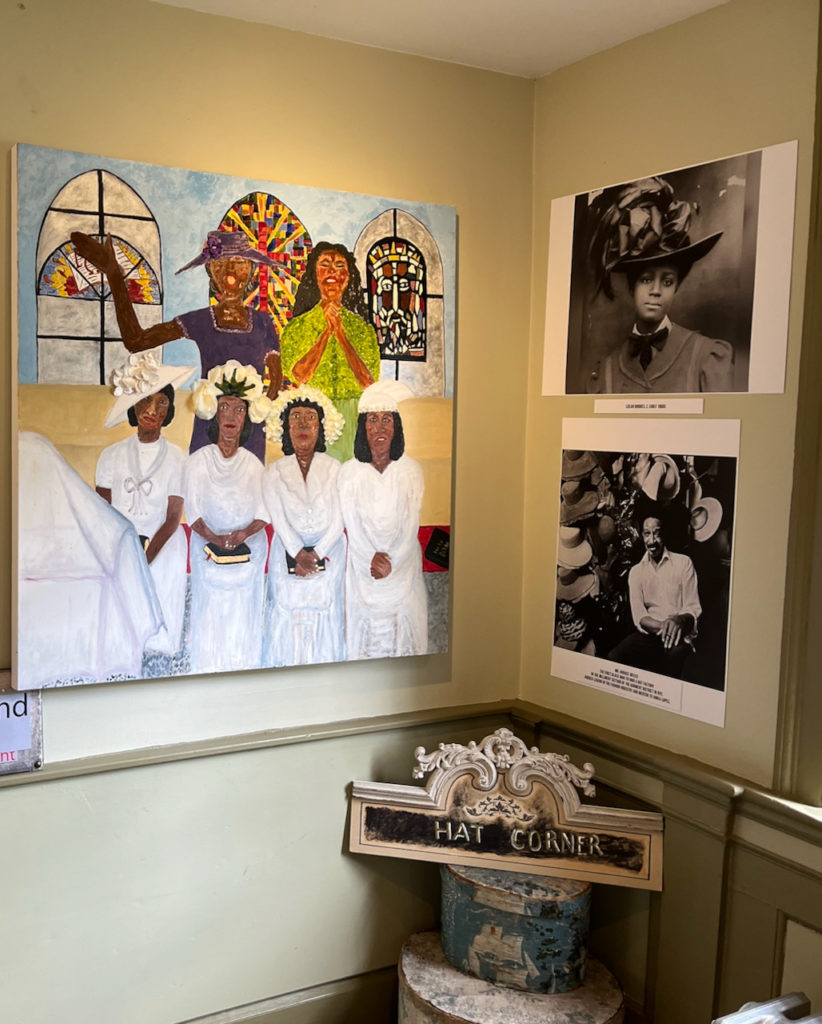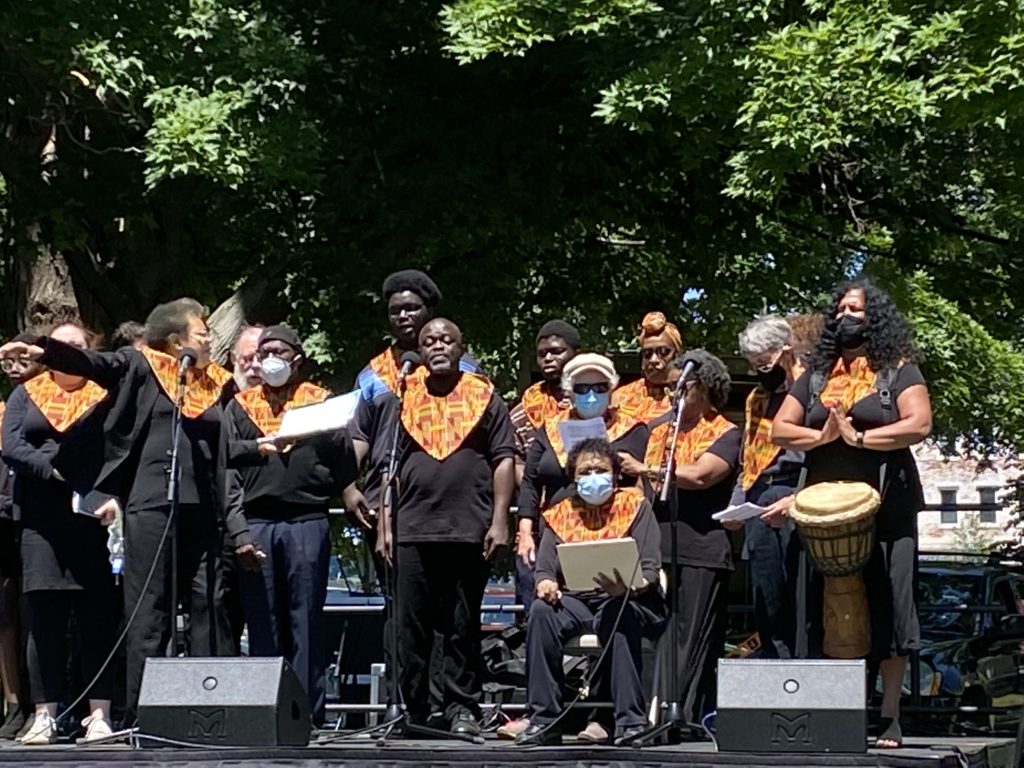Amherst Commemorates Juneteenth With History Tour And Jubilee Celebration On The Common

Civil War re-enactors representing Black soldiers who faught for the Union army during the Civil War, arrive at the West Cemetery via horse-drawn carriage during Amherst's 2022 Juneteenth historical walking tour. Photo: Maura Keene
Amherst celebrated Juneteenth on June 18 and 19 beginning with a wide-ranging heritage walking tour to sites important to the African American history of the town. The walk was sponsored by the newly-formed organization Ancestral Bridges, the Amherst Historical Society, and the town, as well as other community sponsors. It was coordinated by Town Councilor Anika Lopes (District 4) and narrated by William T. Harris, Founder and CEO of Space Center Houston. Both Lopes and Harris are direct descendants of soldiers who fought against slavery in the Civil War. Over 100 people participated in the tour.
The history walk began at the area of West Cemetery where many of Amherst’s African American families are buried. Harris noted that almost one-quarter of Amherst’s Black population, about 25 men, volunteered to fight for the Union Army in the all-Black 54th Massachusetts Volunteer Infantry Regiment and the 5th Cavalry. Some of these soldiers accompanied Major General Gordon Granger into Galveston, Texas on June 19, 1865 to inform the city’s slaves that they were free, the event commemorated by the Juneteenth holiday. Members of the Brace Brigade, dressed in Civil War uniforms marched in formation at the cemetery and also set up a Civil War period field tent at the Amherst History Museum when the tour reached that point.

At the cemetery, several members of the community spoke of the significance of Juneteenth in American history. Kamal Ali, Associate Professor of Ethnic and Gender Studies at Westfield State University recounted the discrimination faced by Black soldiers returning home from fighting in World War I. He told of the “Red Summer” which culminated in the massacre of several hundred African Americans in Elaine, Arkansas on September 30, 1919.
From the cemetery, the tour followed the horse drawn wagon provided by Muddy Brook Farm to the Emily Dickinson homestead. Sitting in the Dickinson garden, tour participants heard of Charles Thompson, trusted employee of then Amherst College President William Augustus Stearns and also sometimes of the Dickinson family. When Frazier Stearns, son of William, volunteered to fight in the Civil War and died in 1862 at the battle of New Bern in North Carolina, Thompson was the person who went to the train station to collect his body.
The crowd also learned that Emily’s father Edward refused to vote for Lincoln and was opposed to emancipation of the slaves, preferring a more conciliatory approach. Emily’s brother Austin paid someone else to fight in his place. But Emily’s lifelong correspondent Colonel Thomas Wentworth Higginson was an abolitionist who supported John Brown’s raid on Harper’s Ferry and commanded an all-black regiment.
Tour participants then proceeded down Main Street to the Amherst History Museum where a special exhibit with photos Amherst’s Black families was assembled. In addition, several striking paintings by artist, physician, activist, and poet Shirley Jackson Whitaker recalled the hat making industry once prominent in town, a tradition carried to the present day by Lopes. Whitaker also introduced her Tote2Vote initiative to combat voter suppression. Hazel’s Blue Lagoon restaurant provided a delicious lunch.

The tour then visited Hope Church and Goodwin AME Zion Church where the Amherst Area Gospel Choir performed. The tour ended with an evening celebration at the Drake.
Jubilee On The Common
The celebration on the Common on Sunday was less structured, but just as joyous with music, food, and crafts. In addition, there was a magic show and dance performance. The event began at noon and lasted until 7 p.m. There was ample time and space for mingling in the cool weather. Again, hundreds joined in the festivities.

